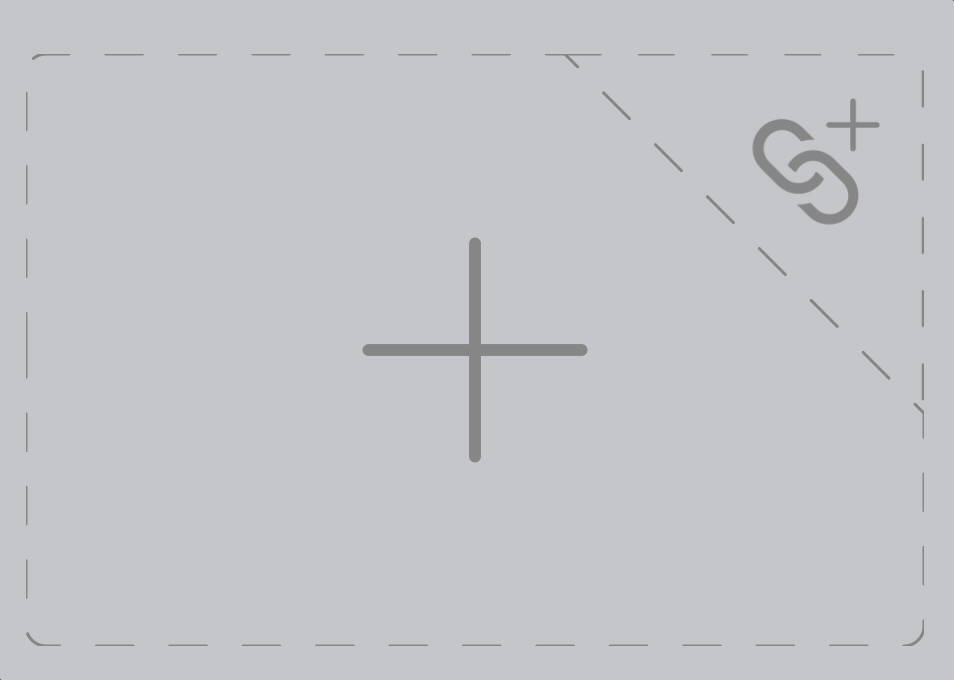е¶ВдљХеЫізїХеѓєиІТзЇњжЧЛиљђCALayerпЉЯ
жИСж≠£еЬ®е∞ЭиѓХеЬ®iPhoneеЇФзФ®з®ЛеЇПз≠Йж£ЛзЫШжЄЄжИПдЄ≠дљњзФ®зњїиљђеК®зФїгАВеК®зФїеЇФиѓ•зЬЛиµЈжЭ•еГПдЄАдЄ™жЧЛиљђзЪДжЄЄжИПзЙЗеєґжФєеПШеЕґиГМйЭҐзЪДйҐЬиЙ≤пЉИжЬЙзВєеГПReversi pieceпЉЙгАВжИСеЈ≤зїПиЃЊж≥ХеИЫеїЇдЇЖдЄАдЄ™еЫізїХеЕґж≠£дЇ§иљізњїиљђзЙЗжЃµзЪДеК®зФїпЉМдљЖжШѓељУжИСе∞ЭиѓХйАЪињЗжФєеПШеЫізїХzиљізЪДжЧЛиљђжЭ•зїХзЭАеѓєиІТиљізњїиљђжЧґпЉМеЃЮйЩЕеЫЊеГПдєЯдЉЪжЧЛиљђпЉИдЄНеЗЇжДПжЦЩпЉЙгАВзЫЄеПНпЉМжИСжГ≥еЫізїХеѓєиІТиљівАЬжМЙеОЯж†ЈвАЭжЧЛиљђеЫЊеГПгАВ
жИСе∞ЭиѓХжЫіжФєlayer.sublayerTransformпЉМдљЖж≤°жЬЙжИРеКЯгАВ
ињЩжШѓжИСзЫЃеЙНзЪДеЃЮжЦљгАВеЃГзЪДеЈ•дљЬеОЯзРЖжШѓиІ£еЖ≥еЬ®еК®зФїзїУжЭЯжЧґиОЈеПЦйХЬеГПеЫЊеГПзЪДйЧЃйҐШгАВиІ£еЖ≥жЦєж°ИжШѓеЃЮйЩЕдЄКдЄНе∞ЖеЫЊе±ВжЧЛиљђ180еЇ¶пЉМиАМжШѓе∞ЖеЕґжЧЛиљђ90еЇ¶пЉМжЫіжФєеЫЊеГПзДґеРОе∞ЖеЕґжЧЛиљђеЫЮжЭ•гАВ
жЬАзїИзЙИжЬђпЉЪеЯЇдЇОLorenzosеїЇиЃЃеИЫеїЇз¶їжХ£йФЃжОІеК®зФїеєґиЃ°зЃЧжѓПеЄІзЪДеПШжНҐзЯ©йШµгАВзЫЄеПНпЉМиѓ•зЙИжЬђиѓХеЫЊж†єжНЃеЫЊе±Ве§Іе∞ПдЉ∞иЃ°жЙАйЬАзЪДвАЬеЉХеѓЉвАЭеЄІжХ∞пЉМзДґеРОдљњзФ®зЇњжАІйФЃжОІеК®зФїгАВж≠§зЙИжЬђдї•дїїжДПиІТеЇ¶жЧЛиљђпЉМеЫ†ж≠§зїХеѓєиІТзЇњжЧЛиљђдљњзФ®45еЇ¶иІТгАВ
дљњзФ®з§ЇдЊЛпЉЪ
[someclass flipLayer:layer image:image angle:M_PI/4]
еЃЮзО∞пЉЪ
- (void)animationDidStop:(CAAnimationGroup *)animation
finished:(BOOL)finished {
CALayer *layer = [animation valueForKey:@"layer"];
if([[animation valueForKey:@"name"] isEqual:@"fadeAnimation"]) {
/* code for another animation */
} else if([[animation valueForKey:@"name"] isEqual:@"flipAnimation"]) {
layer.contents = [animation valueForKey:@"image"];
}
[layer removeAllAnimations];
}
- (void)flipLayer:(CALayer *)layer
image:(CGImageRef)image
angle:(float)angle {
const float duration = 0.5f;
CAKeyframeAnimation *rotate = [CAKeyframeAnimation
animationWithKeyPath:@"transform"];
NSMutableArray *values = [[[NSMutableArray alloc] init] autorelease];
NSMutableArray *times = [[[NSMutableArray alloc] init] autorelease];
/* bigger layers need more "guiding" values */
int frames = MAX(layer.bounds.size.width, layer.bounds.size.height) / 2;
int i;
for (i = 0; i < frames; i++) {
/* create a scale value going from 1.0 to 0.1 to 1.0 */
float scale = MAX(fabs((float)(frames-i*2)/(frames - 1)), 0.1);
CGAffineTransform t1, t2, t3;
t1 = CGAffineTransformMakeRotation(angle);
t2 = CGAffineTransformScale(t1, scale, 1.0f);
t3 = CGAffineTransformRotate(t2, -angle);
CATransform3D trans = CATransform3DMakeAffineTransform(t3);
[values addObject:[NSValue valueWithCATransform3D:trans]];
[times addObject:[NSNumber numberWithFloat:(float)i/(frames - 1)]];
}
rotate.values = values;
rotate.keyTimes = times;
rotate.duration = duration;
rotate.calculationMode = kCAAnimationLinear;
CAKeyframeAnimation *replace = [CAKeyframeAnimation
animationWithKeyPath:@"contents"];
replace.duration = duration / 2;
replace.beginTime = duration / 2;
replace.values = [NSArray arrayWithObjects:(id)image, nil];
replace.keyTimes = [NSArray arrayWithObjects:
[NSNumber numberWithDouble:0.0f], nil];
replace.calculationMode = kCAAnimationDiscrete;
CAAnimationGroup *group = [CAAnimationGroup animation];
group.duration = duration;
group.timingFunction = [CAMediaTimingFunction
functionWithName:kCAMediaTimingFunctionLinear];
group.animations = [NSArray arrayWithObjects:rotate, replace, nil];
group.delegate = self;
group.removedOnCompletion = NO;
group.fillMode = kCAFillModeForwards;
[group setValue:@"flipAnimation" forKey:@"name"];
[group setValue:layer forKey:@"layer"];
[group setValue:(id)image forKey:@"image"];
[layer addAnimation:group forKey:nil];
}
еОЯеІЛдї£з†БпЉЪ
+ (void)flipLayer:(CALayer *)layer
toImage:(CGImageRef)image
withAngle:(double)angle {
const float duration = 0.5f;
CAKeyframeAnimation *diag = [CAKeyframeAnimation
animationWithKeyPath:@"transform.rotation.z"];
diag.duration = duration;
diag.values = [NSArray arrayWithObjects:
[NSNumber numberWithDouble:angle],
[NSNumber numberWithDouble:0.0f],
nil];
diag.keyTimes = [NSArray arrayWithObjects:
[NSNumber numberWithDouble:0.0f],
[NSNumber numberWithDouble:1.0f],
nil];
diag.calculationMode = kCAAnimationDiscrete;
CAKeyframeAnimation *flip = [CAKeyframeAnimation
animationWithKeyPath:@"transform.rotation.y"];
flip.duration = duration;
flip.values = [NSArray arrayWithObjects:
[NSNumber numberWithDouble:0.0f],
[NSNumber numberWithDouble:M_PI / 2],
[NSNumber numberWithDouble:0.0f],
nil];
flip.keyTimes = [NSArray arrayWithObjects:
[NSNumber numberWithDouble:0.0f],
[NSNumber numberWithDouble:0.5f],
[NSNumber numberWithDouble:1.0f],
nil];
flip.calculationMode = kCAAnimationLinear;
CAKeyframeAnimation *replace = [CAKeyframeAnimation
animationWithKeyPath:@"contents"];
replace.duration = duration / 2;
replace.beginTime = duration / 2;
replace.values = [NSArray arrayWithObjects:(id)image, nil];
replace.keyTimes = [NSArray arrayWithObjects:
[NSNumber numberWithDouble:0.0f], nil];
replace.calculationMode = kCAAnimationDiscrete;
CAAnimationGroup *group = [CAAnimationGroup animation];
group.removedOnCompletion = NO;
group.duration = duration;
group.timingFunction = [CAMediaTimingFunction
functionWithName:kCAMediaTimingFunctionLinear];
group.animations = [NSArray arrayWithObjects:diag, flip, replace, nil];
group.fillMode = kCAFillModeForwards;
[layer addAnimation:group forKey:nil];
}
3 дЄ™з≠Фж°И:
з≠Фж°И 0 :(еЊЧеИЖпЉЪ6)
дљ†еПѓдї•ињЩж†ЈдЉ™йА†еЃГпЉЪеИЫеїЇдЄАдЄ™дїње∞ДеПШжНҐпЉМж≤њзЭАеЃГзЪДеѓєиІТзЇњжКШеП†еЫЊе±ВпЉЪ
A-----B B
| | /
| | -> A&D
| | /
C-----D C
жЫіжФєеЫЊеГПпЉМеєґеЬ®еП¶дЄАдЄ™еК®зФїдЄ≠е∞ЖCALayerиљђжНҐеЫЮжЭ•гАВ ињЩе∞ЖдЇІзФЯеЫізїХеЕґеѓєиІТзЇњжЧЛиљђзЪДе±ВзЪДйФЩиІЙгАВ
е¶ВжЮЬжИСиЃ∞еЊЧжХ∞е≠¶ж≠£з°ЃзЪДиѓЭеЇФиѓ•жШѓзЯ©йШµпЉЪ
0.5 0.5 0
0.5 0.5 0
0 0 1
жЫіжЦ∞пЉЪ е•љеРІпЉМCAзЬЯзЪДдЄНеЦЬ搥䚜зФ®зЃАеєґеПШжНҐпЉМдљЖдљ†еПѓдї•зФ®ињЩзІНжЦєеЉПињСдЉЉпЉЪ
CGAffineTransform t1 = CGAffineTransformMakeRotation(M_PI/4.0f);
CGAffineTransform t2 = CGAffineTransformScale(t1, 0.001f, 1.0f);
CGAffineTransform t3 = CGAffineTransformRotate(t2,-M_PI/4.0f);
еЬ®жИСеЬ®ж®°жЛЯеЩ®дЄКзЪДжµЛиѓХдЄ≠дїНзДґе≠ШеЬ®йЧЃйҐШпЉМеЫ†дЄЇжЧЛиљђжѓФteеє≥зІїжЫіењЂпЉМжЙАдї•дљњзФ®зЇѓйїСиЙ≤жЦєеЭЧжХИжЮЬжЬЙзВєе•ЗжА™гАВжИСжГ≥е¶ВжЮЬдљ†жЬЙдЄАдЄ™е±ЕдЄ≠зЪДз≤ЊзБµпЉМеС®еЫіжЬЙйАПжШОеМЇеЯЯпЉМйВ£дєИжХИжЮЬе∞ЖжО•ињСйҐДжЬЯзЪДжХИжЮЬгАВзДґеРОпЉМжВ®еПѓдї•и∞ГжХі t3 зЯ©йШµзЪДеАЉпЉМзЬЛзЬЛжШѓеР¶жЬЙжЫіеРЄеЉХдЇЇзЪДзїУжЮЬгАВ
зїПињЗжЫіе§Ъз†Фз©ґеРОпЉМдЉЉдєОеЇФиѓ•йАЪињЗеЕ≥йФЃеЄІдЄЇиЗ™еЈ±зЪДињЗжЄ°еК®зФїпЉМдї•иОЈеЊЧеѓєињЗжЄ°жЬђиЇЂзЪДжЬАе§ІжОІеИґгАВеБЗиЃЊдљ†и¶БеЬ®дЄАзІТйТЯеЖЕжШЊз§ЇињЩдЄ™еК®зФїпЉМдљ†еЇФиѓ•дљњзФ®kCAAnimationDiscreteеЬ®еНБеИЖдєЛдЄАзІТеЖЕжШЊз§Ї10дЄ™зЯ©йШµгАВйВ£дЇЫзЯ©йШµеПѓдї•йАЪињЗдї•дЄЛдї£з†БзФЯжИРпЉЪCGAffineTransform t1 = CGAffineTransformMakeRotation(M_PI/4.0f);
CGAffineTransform t2 = CGAffineTransformScale(t1, animationStepValue, 1.0f);
CGAffineTransform t3 = CGAffineTransformRotate(t2,-M_PI/4.0f);
еЕґдЄ≠keyFrameзЪДechзЪДanimationStepValueеПЦиЗ™ж≠§ињЫз®ЛпЉЪ
{1 0.7 0.5 0.3 0.1 0.3 0.5 0.7 1}
еН≥пЉЪжВ®зФЯжИРеНБдЄ™дЄНеРМзЪДеПШжНҐзЯ©йШµпЉИеЃЮйЩЕдЄКдЄЇ9пЉЙпЉМе∞ЖеЃГдїђдљЬдЄЇеЕ≥йФЃеЄІжО®йАБеИ∞жѓПеНБеИЖдєЛдЄАзІТпЉМзДґеРОдљњзФ®вАЬдЄНжПТеЕ•вАЭеПВжХ∞гАВжВ®еПѓдї•и∞ГжХіеК®зФїзЉЦеПЈдї•еє≥и°°еє≥жїСеЇ¶еТМжАІиГљ*
*еѓєдЄНиµЈеПѓиГљзЪДйФЩиѓѓпЉМжЬАеРОдЄАйГ®еИЖжШѓеЬ®ж≤°жЬЙжЛЉеЖЩж£АжЯ•зЪДжГЕеЖµдЄЛзЉЦеЖЩзЪДгАВ
з≠Фж°И 1 :(еЊЧеИЖпЉЪ4)
жИСиІ£еЖ≥дЇЖгАВжВ®еПѓиГљеЈ≤зїПжЬЙдЇЖиІ£еЖ≥жЦєж°ИпЉМдљЖињЩжШѓжИСжЙЊеИ∞зЪДгАВзЬЯзЪДеЊИзЃАеНХ......
жВ®еПѓдї•дљњзФ®CABasicAnimationињЫи°МеѓєиІТзЇњжЧЛиљђпЉМдљЖеЃГйЬАи¶БжШѓдЄ§дЄ™зЯ©йШµзЪДдЄ≤иБФпЉМеН≥еЫЊе±ВзЪДзО∞жЬЙзЯ©йШµеТМCATransform3DRotateгАВ вАЬжКАеЈІвАЭжШѓпЉМеЬ®3DRotateдЄ≠дљ†йЬАи¶БжМЗеЃЪи¶БжЧЛиљђзЪДеЭРж†ЗгАВ
дї£з†БзЬЛиµЈжЭ•еГПињЩж†ЈпЉЪ
CATransform3DConcat(theLayer.transform, CATransform3DRotate(CATransform3DIdentity, M_PI/2, -1, 1, 0));
ињЩе∞ЖдљњжЧЛиљђзЬЛиµЈжЭ•е•љеГПж≠£жֺ嚥зЪДеЈ¶дЄКиІТеЫізїХиљіY = XжЧЛиљђпЉМеєґдЄФи°МињЫеИ∞еП≥дЄЛиІТгАВ
еК®зФїдї£з†Бе¶ВдЄЛжЙАз§ЇпЉЪ
CABasicAnimation *ani1 = [CABasicAnimation animationWithKeyPath:@"transform"];
// set self as the delegate so you can implement (void)animationDidStop:finished: to handle anything you might want to do upon completion
[ani1 setDelegate:self];
// set the duration of the animation - a float
[ani1 setDuration:dur];
// set the animation's "toValue" which MUST be wrapped in an NSValue instance (except special cases such as colors)
ani1.toValue = [NSValue valueWithCATransform3D:CATransform3DConcat(theLayer.transform, CATransform3DRotate(CATransform3DIdentity, M_PI/2, -1, 1, 0))];
// give the animation a name so you can check it in the animationDidStop:finished: method
[ani1 setValue:@"shrink" forKey:@"name"];
// finally, apply the animation
[theLayer addAnimation:ani1 forKey@"arbitraryKey"];
е∞±жШѓињЩж†ЈпЉБиѓ•дї£з†Бе∞Жж≠£жֺ嚥пЉИtheLayerпЉЙжЧЛиљђиЗ≥йЪРиЇЂпЉМеЫ†дЄЇеЃГи°МињЫ90еЇ¶еєґеСИзО∞дЄОе±ПеєХж≠£дЇ§гАВзДґеРОпЉМжВ®еПѓдї•жЫіжФєйҐЬиЙ≤пЉМеєґжЙІи°МеЃМеЕ®зЫЄеРМзЪДеК®зФїдї•е∞ЖеЕґйЗНжЦ∞и∞ГжХігАВзЫЄеРМзЪДеК®зФїжШѓжЬЙжХИзЪДпЉМеЫ†дЄЇжИСдїђж≠£еЬ®ињЮжО•зЯ©йШµпЉМеЫ†ж≠§жѓПжђ°и¶БжЧЛиљђжЧґпЉМеП™йЬАжЙІи°МдЄ§жђ°пЉМжИЦе∞ЖM_PI/2жЫіжФєдЄЇM_PIгАВ
жЬАеРОпЉМеЇФиѓ•ж≥®жДПпЉМињЩиЃ©жИСзЦѓдЇЖпЉМеЃМжИРеРОпЉМеЫЊе±Ве∞ЖењЂйАЯжБҐе§НеИ∞еОЯеІЛзКґжАБпЉМйЩ§йЭЮжВ®жШОз°Ѓе∞ЖеЕґиЃЊзљЃдЄЇзїУжЭЯеК®зФїзКґжАБгАВињЩжДПеС≥зЭАпЉМе∞±еЬ®и°М[theLayer addAnimation:ani1 forKey@"arbitraryKey"];дєЛеЙНпЉМжВ®йЬАи¶БжЈїеК†
theLayer.transform = CATransform3DConcat(v.theSquare.transform, CATransform3DRotate(CATransform3DIdentity, M_PI/2, -1, 1, 0));
еЬ®еК®зФїеЃМжИРеРОиЃЊзљЃеЕґеАЉгАВињЩж†ЈеПѓдї•йШ≤ж≠ҐжНХжНЙеЫЮеИ∞еОЯеІЛзКґжАБгАВ
еЄМжЬЫињЩдЉЪжЬЙжЙАеЄЃеК©гАВе¶ВжЮЬдЄНжШѓдљ†йВ£дєИдєЯиЃЄе∞±еГПжИСдїђдЄАж†Јж≠£еЬ®жТЮеҐЩзЪДдЇЇпЉБ пЉЪпЉЙ
еє≤жЭѓпЉМ
еЕЛйЗМжЦѓ
з≠Фж°И 2 :(еЊЧеИЖпЉЪ1)
ињЩжШѓдЄАдЄ™Xamarin iOSз§ЇдЊЛпЉМзФ®дЇОжЛНжЙУжֺ嚥жМЙйТЃзЪДиІТиРљпЉМе¶ВзЛЧиА≥пЉИиљїжЭЊзІїж§НеИ∞obj-cпЉЙпЉЪ
жЦєж≥Х1пЉЪеѓє1еТМxиљідљњзФ®yзЪДжЧЛиљђеК®зФїпЉИXamarin.iOSдЄ≠зЪДз§ЇдЊЛпЉМдљЖеПѓиљїжЭЊзІїж§НеИ∞obj- CпЉЙпЉЪ
// add to the UIView subclass you wish to rotate, where necessary
AnimateNotify(0.10, 0, UIViewAnimationOptions.CurveEaseOut | UIViewAnimationOptions.AllowUserInteraction | UIViewAnimationOptions.BeginFromCurrentState, () =>
{
// note the final 3 params indicate "rotate around x&y axes, but not z"
var transf = CATransform3D.MakeRotation(-1 * (nfloat)Math.PI / 4, 1, 1, 0);
transf.m34 = 1.0f / -500;
Layer.Transform = transf;
}, null);
жЦєж≥Х2 пЉЪеП™йЬАе∞Жx-axisиљЃжНҐеТМy-axisиљЃжТ≠жЈїеК†еИ∞CAAnimationGroupпЉМдї•дЊњеЃГдїђеРМжЧґињРи°МпЉЪ
// add to the UIView subclass you wish to rotate, where necessary
AnimateNotify(1.0, 0, UIViewAnimationOptions.CurveEaseOut | UIViewAnimationOptions.AllowUserInteraction | UIViewAnimationOptions.BeginFromCurrentState, () =>
{
nfloat angleTo = -1 * (nfloat)Math.PI / 4;
nfloat angleFrom = 0.0f ;
string animKey = "rotate";
// y-axis rotation
var anim = new CABasicAnimation();
anim.KeyPath = "transform.rotation.y";
anim.AutoReverses = false;
anim.Duration = 0.1f;
anim.From = new NSNumber(angleFrom);
anim.To = new NSNumber(angleTo);
// x-axis rotation
var animX = new CABasicAnimation();
animX.KeyPath = "transform.rotation.x";
animX.AutoReverses = false;
animX.Duration = 0.1f;
animX.From = new NSNumber(angleFrom);
animX.To = new NSNumber(angleTo);
// add both rotations to a group, to run simultaneously
var animGroup = new CAAnimationGroup();
animGroup.Duration = 0.1f;
animGroup.AutoReverses = false;
animGroup.Animations = new CAAnimation[] {anim, animX};
Layer.AddAnimation(animGroup, animKey);
// add perspective
var transf = CATransform3D.Identity;
transf.m34 = 1.0f / 500;
Layer.Transform = transf;
}, null);
- е¶ВдљХеЫізїХеѓєиІТзЇњжЧЛиљђCALayerпЉЯ
- еЫізїХеѓєиІТзЇњжЧЛиљђеє≥йЭҐ
- CALayerжЄ≤жЯУйЧЃйҐШдЄОеѓєиІТиЩЪзЇњ
- е¶ВдљХеЫізїХеЬЖеЬИжЧЛиљђCAShapeLayerеЉІпЉЯ
- еЫізїХеЃГзЪДеѓєиІТзЇњжЧЛиљђзЂЛжЦєдљУ
- еЫізїХдЄ≠ењГ
- е¶ВдљХеЫізїХзВєжЧЛиљђеЫЊзЙЗж°ЖпЉЯ
- з°ЃеЃЪеѓєиІТзЇњеС®еЫізЪДиЊєзХМзߩ嚥
- е¶ВдљХеЫізїХжЯРдЄ™зВєжЧЛиљђSCNNodeпЉЯ
- CSSеѓєиІТзЇњйЪПжЦЗжЬђжЧЛиљђ
- жИСеЖЩдЇЖињЩжЃµдї£з†БпЉМдљЖжИСжЧ†ж≥ХзРЖиІ£жИСзЪДйФЩиѓѓ
- жИСжЧ†ж≥ХдїОдЄАдЄ™дї£з†БеЃЮдЊЛзЪДеИЧи°®дЄ≠еИ†йЩ§ None еАЉпЉМдљЖжИСеПѓдї•еЬ®еП¶дЄАдЄ™еЃЮдЊЛдЄ≠гАВдЄЇдїАдєИеЃГйАВзФ®дЇОдЄАдЄ™зїЖеИЖеЄВеЬЇиАМдЄНйАВзФ®дЇОеП¶дЄАдЄ™зїЖеИЖеЄВеЬЇпЉЯ
- жШѓеР¶жЬЙеПѓиГљдљњ loadstring дЄНеПѓиГљз≠ЙдЇОжЙУеН∞пЉЯеНҐйШњ
- javaдЄ≠зЪДrandom.expovariate()
- Appscript йАЪињЗдЉЪиЃЃеЬ® Google жЧ•еОЖдЄ≠еПСйАБзФµе≠РйВЃдїґеТМеИЫеїЇжіїеК®
- дЄЇдїАдєИжИСзЪД Onclick зЃ≠е§іеКЯиГљеЬ® React дЄ≠дЄНиµЈдљЬзФ®пЉЯ
- еЬ®ж≠§дї£з†БдЄ≠жШѓеР¶жЬЙдљњзФ®вАЬthisвАЭзЪДжЫњдї£жЦєж≥ХпЉЯ
- еЬ® SQL Server еТМ PostgreSQL дЄКжߕ胥пЉМжИСе¶ВдљХдїОзђђдЄАдЄ™и°®иОЈеЊЧзђђдЇМдЄ™и°®зЪДеПѓиІЖеМЦ
- жѓПеНГдЄ™жХ∞е≠ЧеЊЧеИ∞
- жЫіжЦ∞дЇЖеЯОеЄВиЊєзХМ KML жЦЗдїґзЪДжЭ•жЇРпЉЯ
